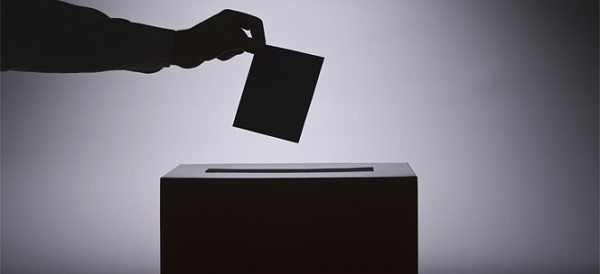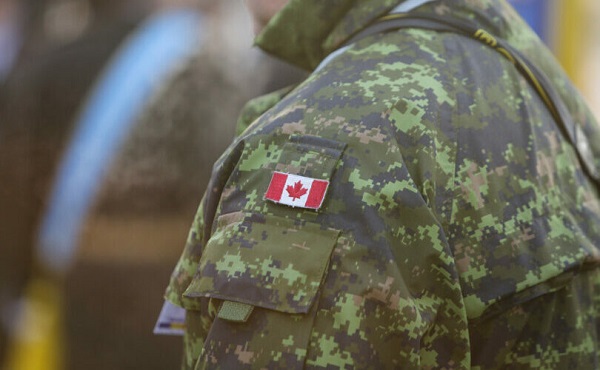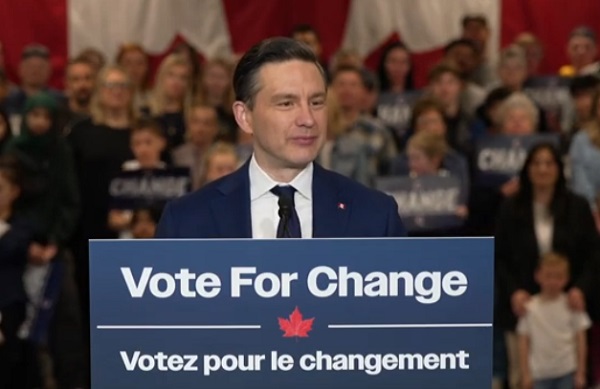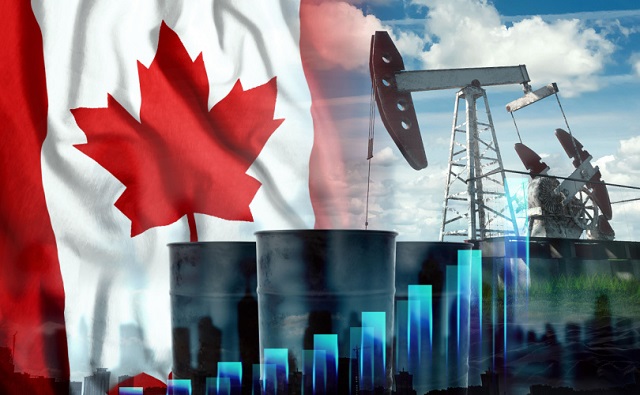National
Taxpayers demand a public inquiry into Elections B.C.

From the Canadian Taxpayers Federation
By Carson Binda
Elections B.C. is drawing scrutiny which threatens to undermine taxpayer’s faith in our elections.
That’s a problem.
Here’s the solution: call a public inquiry into Elections B.C., not a politicised process through legislative committees working behind closed doors.
There is nothing to suggest the B.C. provincial election was stolen. There is nothing to suggest Elections B.C. was in cahoots with one party or another. But that doesn’t mean we can afford to turn a blind eye to its bureaucratic mishandling of the most important day in our democratic cycle.
In a democracy, taxpayers must have faith in elections and repeated screw-ups from Elections B.C. erodes that trust. And make no mistake, Elections B.C. did screw up its handling of the provincial election.
The problems with Elections B.C. range from bad to worse.
It took Elections B.C. more than a week to finish the preliminary tally of votes. Voting closed Oct. 19, but the final count didn’t occur until Oct. 28.
British Columbians shouldn’t be left in limbo because Elections B.C. bureaucrats won’t work late to count votes. And it shouldn’t take an extra week for the final count to begin.
Then came the revelation that Elections B.C. officials were storing ballots in their personal homes. Think about that for a moment. When you cast your ballot, did you imagine it would find its way into the basement of a bureaucrat’s home?
British Columbians generally believe Elections B.C. acts in good faith. But why allow questionable chains of custody for the most important pieces of paper in a democracy? Why risk storing ballots in bureaucrats’ basements instead of secure government buildings?
And we have good reasons to question the competency of the Elections B.C. bureaucracy.
First, the public was told Elections B.C. failed to count 14 votes in Surrey-Guildford. Then Elections B.C. found another 14 uncounted votes in the same riding, bringing the total to 28.
The NDP won Surrey-Guildford by 22 votes, meaning 28 uncounted votes could have been enough to alter the election. It’s also the riding that gave the NDP a one-seat majority government.
Elections B.C. blamed “human error” in a statement sent to the CTF for the uncounted votes in Surrey-Guildford.
A ballot box with 860 votes in Prince-George Mackenzie went uncounted and unreported during the initial counts. This mistake should have been caught immediately.
“Elections officials should have discovered this error when completing the ballot reconciliation process on election night, however this was not completed correctly,” according to Elections B.C.
Not only did Elections B.C. make a mistake by ignoring the ballot box in the first place, they also screwed-up the election night process by not catching its mistake.
In three-quarters of B.C.’s 93 ridings, mistakes by Elections B.C. led to unreported votes. That’s unacceptable.
To be fair, all the votes were eventually accounted for and counted. But our elections are too important to risk with these kinds of blunders from bureaucrats.
Both the ruling NDP and opposition B.C. Conservatives agree there needs to be an investigation into Elections B.C.’s mistakes.
The NDP wants an all-party committee made up of MLAs to probe Elections B.C. But that’s not good enough.
Legislative committees are political and are made up of politicians fighting for the spotlight. They can hide behind in-camera meetings the public doesn’t have access to.
For the public to have faith in our elections, the public needs to be involved in the inquiry. That’s what the B.C. Conservatives are calling for: an independent public review.
British Columbians need to have faith in our elections, so the public must be a part of the investigation. This is far too important an issue for taxpayers to be shunted off to the side while politicians play partisan games.
Carson Binda is the B.C. Director for the Canadians Taxpayers Federation.
2025 Federal Election
Carney’s budget is worse than Trudeau’s

Liberal Leader Mark Carney is planning to borrow more money than former prime minister Justin Trudeau.
That’s an odd plan for a former banker because the federal government is already spending more on debt interest payments than it spends on health-care transfers to the provinces.
Let’s take a deeper look at Carney’s plan.
Carney says that his government would “spend less, invest more.”
At first glance, that might sound better than the previous decade of massive deficits and increasing debt, but does that sound like a real change?
Because if you open a thesaurus, you’ll find that “spend” and “invest” are synonyms, they mean the same thing.
And Carney’s platform shows it. Carney plans to increase government spending by $130 billion. He plans to increase the federal debt by $225 billion over the next four years. That’s about $100 billion more than Trudeau was planning borrow over the same period, according to the most recent Fall Economic Statement.
Carney is planning to waste $5.6 billion more on debt interest charges than Trudeau. Interest charges already cost taxpayers more than $1 billion per week.
The platform claims that Carney will run a budget surplus in 2028, but that’s nonsense. Because once you include the $48 billion of spending in Carney’s “capital” budget, the tiny surplus disappears, and taxpayers are stuck with more debt.
And that’s despite planning to take even more money from Canadians in years ahead. Carney’s platform shows that his carbon tariff, another carbon tax on Canadians, will cost taxpayers $500 million.
The bottom line is that government spending, no matter what pile it is put into, is just government spending. And when the government spends too much, that means it must borrow more money, and taxpayers have to pay the interest payments on that irresponsible borrowing.
Canadians don’t even believe that Carney can follow through on his watered-down plan. A majority of Canadians are skeptical that Carney will balance the operational budget in three years, according to Leger polling.
All Carney’s plan means for Canadians is more borrowing and higher debt. And taxpayers can’t afford anymore debt.
When the Liberals were first elected the debt was $616 billion. It’s projected to reach almost $1.3 trillion by the end of the year, that means the debt has more than doubled in the last decade.
Every single Canadian’s individual share of the federal debt averages about $30,000.
Interest charges on the debt are costing taxpayers $53.7 billion this year. That’s more than the government takes in GST from Canadians. That means every time you go to the grocery store, fill up your car with gas, or buy almost anything else, all that federal sales tax you pay isn’t being used for anything but paying for the government’s poor financial decisions.
Creative accounting is not the solution to get the government’s fiscal house in order. It’s spending cuts. And Carney even says this.
“The federal government has been spending too much,” said Carney. He then went on to acknowledge the huge spending growth of the government over the last decade and the ballooning of the federal bureaucracy. A serious plan to balance the budget and pay down debt includes cutting spending and slashing bureaucracy.
But the Conservatives aren’t off the hook here either. Conservative Leader Pierre Poilievre has said that he will balance the budget “as soon as possible,” but hasn’t told taxpayers when that is.
More debt today means higher taxes tomorrow. That’s because every dollar borrowed by the federal government must be paid back plus interest. Any party that says it wants to make life more affordable also needs a plan to start paying back the debt.
Taxpayers need a government that will commit to balancing the budget for real and start paying back debt, not one that is continuing to pile on debt and waste billions on interest charges.
armed forces
Yet another struggling soldier says Veteran Affairs Canada offered him euthanasia

From LifeSiteNews
‘It made me wonder, were they really there to help us, or slowly groom us to say ‘here’s a solution, just kill yourself.’
Yet another Canadian combat veteran has come forward to reveal that when he sought help, he was instead offered euthanasia.
David Baltzer, who served two tours in Afghanistan with the Princess Patricia’s Canadian Light Infantry, revealed to the Toronto Sun that he was offered euthanasia on December 23, 2019—making him, as the Sun noted, “among the first Canadian soldiers offered therapeutic suicide by the federal government.”
Baltzer had been having a disagreement with his existing caseworker, when assisted suicide was brought up in in call with a different agent from Veteran Affairs Canada.
“It made me wonder, were they really there to help us, or slowly groom us to say ‘here’s a solution, just kill yourself,” Baltzer told the Sun.“I was in my lowest down point, it was just before Christmas. He says to me, ‘I would like to make a suggestion for you. Keep an open mind, think about it, you’ve tried all this and nothing seems to be working, but have you thought about medical-assisted suicide?’”
Baltzer was stunned. “It just seems to me that they just want us to be like ‘f–k this, I give up, this sucks, I’d rather just take my own life,’” he said. “That’s how I honestly felt.”
Baltzer, who is from St. Catharines, Ontario, joined up at age 17, and moved to Manitoba to join the Princess Patricia’s Canadian Light Infantry, one of Canada’s elite units. He headed to Afghanistan in 2006. The Sun noted that he “was among Canada’s first troops deployed to Afghanistan as part Operation Athena, where he served two tours and saw plenty of combat.”
“We went out on long-range patrols trying to find the Taliban, and that’s exactly what we did,” Baltzer said. “The best way I can describe it, it was like Black Hawk Down — all of the sudden the s–t hit the fan and I was like ‘wow, we’re fighting, who would have thought? Canada hasn’t fought like this since the Korean War.”
After returning from Afghanistan, Baltzer says he was offered counselling by Veteran Affairs Canada, but it “was of little help,” and he began to self-medicate for his trauma through substance abuse (he noted that he is, thankfully, doing well today). Baltzer’s story is part of a growing scandal. As the Sun reported:
A key figure shedding light on the VAC MAID scandal was CAF veteran Mark Meincke, whose trauma-recovery podcast Operation Tango Romeo broke the story. ‘Veterans, especially combat veterans, usually don’t reach out for help until like a year longer than they should’ve,’ Meincke said, telling the Sun he waited over two decades before seeking help.
‘We’re desperate by the time we put our hands up for help. Offering MAID is like throwing a cinderblock instead of a life preserver.’ Meincke said Baltzer’s story shoots down VAC’s assertions blaming one caseworker for offering MAID to veterans, and suggests the problem is far more serious than some rogue public servant.
‘It had to have been policy. because it’s just too many people in too many provinces,” Meincke told the Sun. “Every province has service agents from that province.’
Veterans Affairs Canada claimed in 2022 that between four and 20 veterans had been offered assisted suicide; Meincke “personally knows of five, and said the actual number’s likely close to 20.” In a previous investigation, VAC claimed that only one caseworker was responsible—at least for the four confirmed cases—and that the person “was lo longer employed with VAC.” Baltzer says VAC should have military vets as caseworkers, rather than civilians who can’t understand what vets have been through.
To date, no federal party leader has referenced Canada’s ongoing euthanasia scandals during the 2025 election campaign.
-

 2025 Federal Election2 days ago
2025 Federal Election2 days agoTrump Has Driven Canadians Crazy. This Is How Crazy.
-

 2025 Federal Election2 days ago
2025 Federal Election2 days agoThe Anhui Convergence: Chinese United Front Network Surfaces in Australian and Canadian Elections
-

 Automotive1 day ago
Automotive1 day agoHyundai moves SUV production to U.S.
-

 Entertainment1 day ago
Entertainment1 day agoPedro Pascal launches attack on J.K. Rowling over biological sex views
-

 2025 Federal Election1 day ago
2025 Federal Election1 day agoAs PM Poilievre would cancel summer holidays for MP’s so Ottawa can finally get back to work
-

 2025 Federal Election2 days ago
2025 Federal Election2 days agoPolls say Canadians will give Trump what he wants, a Carney victory.
-

 2025 Federal Election2 days ago
2025 Federal Election2 days agoCarney Liberals pledge to follow ‘gender-based goals analysis’ in all government policy
-

 2025 Federal Election1 day ago
2025 Federal Election1 day agoThe Cost of Underselling Canadian Oil and Gas to the USA





